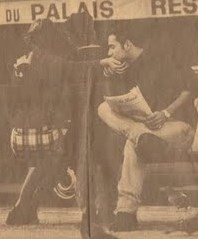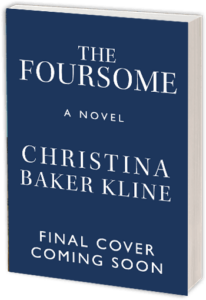 An award-winning memoirist offers advice on writing about family and history — and family history:
An award-winning memoirist offers advice on writing about family and history — and family history:
Tomorrow we arrive in Florida for the holiday, and I can assure you that within a few hours, my mom and I will reach some minor tension over the Thanksgiving Dinner. For example, I’ll want to scrub and roast the sweet potatoes with olive oil, sea salt and herbs. She’ll use the canned kind and sprinkle them with brown sugar. Mine will be better, of course. But everyone will eat more of hers. Why? Because she’s kinder and sweeter than I. Everyone loves her more.
Isn’t it obvious? Whether we’re talking about sweet potatoes, a ravioli recipe, or the rice you were forced to harvest in deadly heat— food reveals. That’s why I wrote two books about it—one a social history, the other a memoir. Food—as a subject and a metaphor—gave me an excellent window to parts of life others overlook. Food is so personal and emotional for people. It brings out love and disgust and longings. It reveals power and hunger and pain.
People ask if writing about food is different than other kind of writing. Not really. I’d say more important is that good writing is different from bad writing. For me, the biggest challenge was trying to write about the past with honesty.
Maybe someday you’ll try, too. And if you do you’ll probably find out what I did: that you can never fully succeed. “The past is a foreign country: They do things differently there,” wrote the novelist L.P. Hartley. Historians know this to be true. Do memoirists and writers? History does not leave tidy truthful packages for us to find. It is silent where you need words and records. Even your own memories will be full of flaws. No, you will never get it all right. Still, you must risk it and do your best. Why? Because the present isn’t worth much without the past.
Here are some of my tips should you try to write about the past—whether in a memoir, fiction, history book or other:
1. Go to the landscape you are writing about. Stand on the earth where the war happened, where the slaves bent over the crop, or where your great grandmother looked out at the sea or train. Listen for the ghosts, if you believe in such things. Or at the very least, see the remaining shape of the landscape where your characters once lived—even if to retrieve a particular slant of light.
2. Talk to the living. Be brave and call or write to experts, such as PhDs in universities, specializing in your time period (read his or her book first, of course). Ask for suggestions about what to read or who to talk to. I frequently have turned to food historians and simply asked for help. (Always thank and give credit!) If you’re writing a memoir, seek out old relatives and gather their stories. Warning: accounts may not concur. Learn to read the gaps and omissions.
3. Talk to the dead. Even better, listen to them. Access their documents and letters, hear their music, touch their clothes or tools. Read their newspapers. Stare and stare again at photos to find the details the specificity that will bring your writing alive.
4. Know that your own memories will be faulty. As a memoirist, you will likely conjure dialogue as you remember it and details to suit your ends. Can you really reconstruct dialogue from three or ten years ago? At the least, can you reconstruct the spirit of the dialogue? Will you get in trouble if you’re wrong?
5. Come up with a philosophy that you can live with on people’s feelings. Some memoirists say the hell with family; it’s my story. Others ask permissi on. Still others give veto power to their subjects. My approach was to share volatile material with my dad and remove parts of the story that he requested if those parts belonged only to his personal history, not to mine. But in the case of our shared history, I had to be fair to myself and write what I needed.
on. Still others give veto power to their subjects. My approach was to share volatile material with my dad and remove parts of the story that he requested if those parts belonged only to his personal history, not to mine. But in the case of our shared history, I had to be fair to myself and write what I needed.
In the end, people will critique, complain, and praise. But if you’ve done your very best to be honest and accurate about the past, you’ll be able to live with yourself — sweet potatoes or not.
Laura Schenone is the author of The Lost Ravioli Recipes of Hoboken: A Search for Food and Family, and the James Beard Award-Winning A Thousand Years Over a Hot Stove: A History of American Women Told Through Food, Recipes, and Remembrances. She writes for Saveur and other publications. Her website is LauraSchenone, and she blogs at JellyPress.

 More than a decade ago, leafing through The New York Times, I came across this image as I was beginning to work on a new novel. I assume that it was part of an advertisement, but I cut it out carefully around the edges, so I don’t know for sure. I don’t even know when it appeared in the paper, though from what I’ve deduced from articles on the back side it seems to have been some time in the spring of 1998. (An ad for a wine store says “Prices effective through April 30, 1998.”)
More than a decade ago, leafing through The New York Times, I came across this image as I was beginning to work on a new novel. I assume that it was part of an advertisement, but I cut it out carefully around the edges, so I don’t know for sure. I don’t even know when it appeared in the paper, though from what I’ve deduced from articles on the back side it seems to have been some time in the spring of 1998. (An ad for a wine store says “Prices effective through April 30, 1998.”)